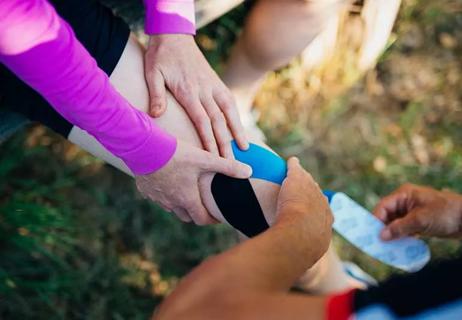Tips for a fun, safe holiday for adults and children

The Fourth of July brings colorful fireworks that symbolize bombs bursting in air to remind us of those who valiantly fought for our freedom and independence. While they’re beautiful, those fireworks can cause a lot of pain if not handled safely.
Advertisement
Cleveland Clinic is a non-profit academic medical center. Advertising on our site helps support our mission. We do not endorse non-Cleveland Clinic products or services. Policy
According to the Consumer Product Safety Commission (CPSC), there were 9,100 emergency room visits for firework-related injuries in 2018. And surprisingly, children between the ages of 10 to 14 accounted for the highest rate of those emergency department, fireworks-related visits.
Emergency room physician Tom Waters, MD, says most fireworks-related injuries he sees involve extremities.
“Things we typically see in the emergency department involve injuries to fingers, hands and eyes,” he says. This is consistent with CPSC’s findings which reported 28% of injuries to the hands and fingers and 24% to the legs.
Researchers with CPSC found that people got hurt most often playing with lit fireworks or because they ignited fireworks while holding them. They also experienced injuries when firework devices malfunctioned or didn’t work as expected.
Many Independence Day injuries also happen because young children handle fireworks that people think are less powerful, such as sparklers and bottle rockets.
Parents, beware. You might not realize that sparklers burn at temperatures of about 2,000 degrees Fahrenheit, which is hot enough to melt some metals. In 2018, sparklers and bottle rockets combined caused an estimated 700 emergency department-treated injuries according to CPSC.
Advertisement
Those who were hurt most often were children between the ages of 10 and 14. So if you’re going to put on a home fireworks display, it’s best to keep the kids at a safe distance.
Fireworks incidents become deadly when banned, professional and home-manufactured devices are involved. Of the five deaths recorded in 2018, the victim was handling (or was a bystander to someone who was handling) a banned, professional or home-manufactured device.
How can you tell if the fireworks are legal or for home use? Avoid buying fireworks that are packaged in brown paper, which is often a sign that they were made for professional displays and could pose a danger.
Avoid common injuries with these tips:
If someone you know is hurt lighting fireworks, you can start first aid before getting to the ER, Dr. Waters says.
“If it’s a burn injury, you want to cool the burn right away and get a clean, dry dressing on it,” he explains. “If it’s an injury from something exploding, you want to hold pressure on it to control the bleeding and get to the emergency department as fast as possible.”
Taking precautions will help you enjoy this summer holiday while staying safe.
Advertisement
Learn more about our editorial process.
Advertisement

Common questions you should ask to find a rehabilitation solution that’s right for you

Care for your ears by steering clear of cotton swabs, taking precautions in loud settings and seeking medical help when needed

Elastic therapeutic tape can provide extra support, but it can’t improve your stats

Fit, duration and positioning are more important than you might think

Candles release hydrocarbons into the air, but don’t pose a significant health risk

Experts recommend having infants sleep in your bedroom but not in your bed

Building shoulder strength can minimize your risk of injury

Have a snow — ball and help them strengthen their developmental skills

Type 2 diabetes isn’t inevitable with these dietary changes

Applying a hot or cold compress can help with pain